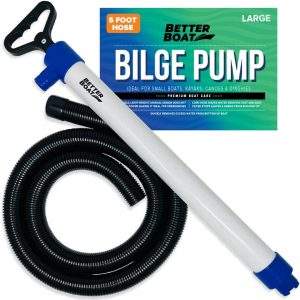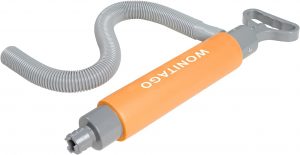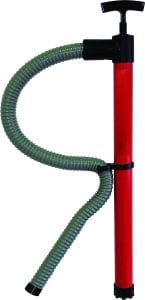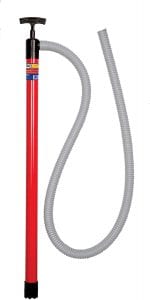The Best Manual Bilge Pump
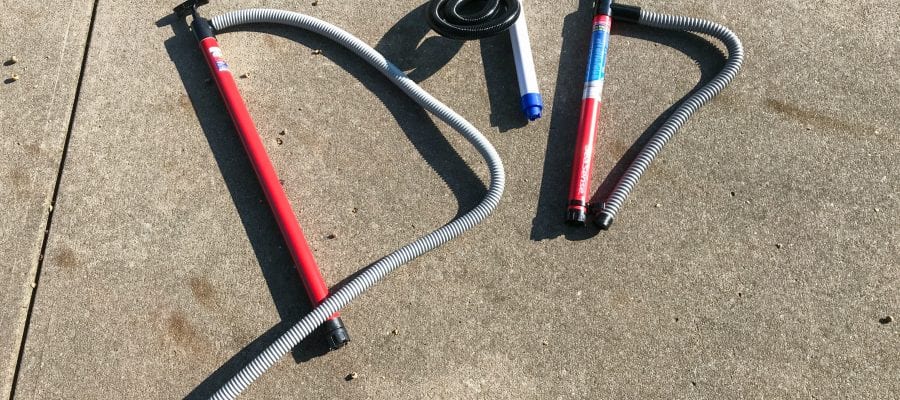
Our Review Process
Don't Waste Your Money is focused on helping you make the best purchasing decision. Our team of experts spends hundreds of hours analyzing, testing, and researching products so you don't have to. Learn more.
Our Picks For The Top Manual Bilge Pumps
With a 39-inch hose, this manual bilge pump will help remove water from the bottom of your boat without having to get in the middle of it. It has a 1-inch intake nozzle and a hose that's 1.25 inches in diameter, which makes water removal quick and easy. The filter is built to avoid clogging and a premium rubber seal keeps the gasket watertight, so ...
Clog-Preventing FilterYou won't have to worry about clogging with this manual bilge pump, which has a filter built to keep clogs at bay.
Available in orange or black, this manual bilge pump measures 16.5 inches. The model offers two water inlets and one hose that can quickly be attached to either inlet. The handle has an ergonomic design that makes it comfortable to use, while the bottom filter is built to prevent clogging.
Affordable Price TagStick to your budget with this economical manual bilge pump.
Choose from two different sizes with this manual bilge pump: 24 by 36 inches or 24 by 72 inches. The larger size can move more water with each round, reducing the work you'll have to do, so it can be worth it to go for the larger size. It has a lightweight design and is corrosion-resistant to give you many years of use.
Two Size OptionsYou can pick from a longer or shorter length with this bilge pump, allowing you to displace more water with each plunge.
With three different lengths, you can find the right size to fit your needs with this hand pump. It has a removable foot to make it easy to clean it between uses. What really sets this pump apart, though, is the steel shaft that bolsters its strength, reducing your own manual labor.
Steel ShaftThe steel shaft on this manual bilge pump gives you extra power as you remove water from your watercraft.
When taking out your kayak or boat, it's a good idea to have this manual bilge pump on hand for potential emergencies. The unit is constructed from materials that are designed to resist corrosion. The attached hose measures 32 inches and can be removed to make storage easier.
Universal FitIn addition to watercraft, you can also use this manual bilge pump to empty out a fountain or bird bath for cleaning.
Buying Guide
When you’re in a vehicle surrounded by water, it’s inevitable a little water might make its way into that vehicle. But if you should be unlucky enough to spring a leak while you’re away from land, that water can put you at risk of sinking.
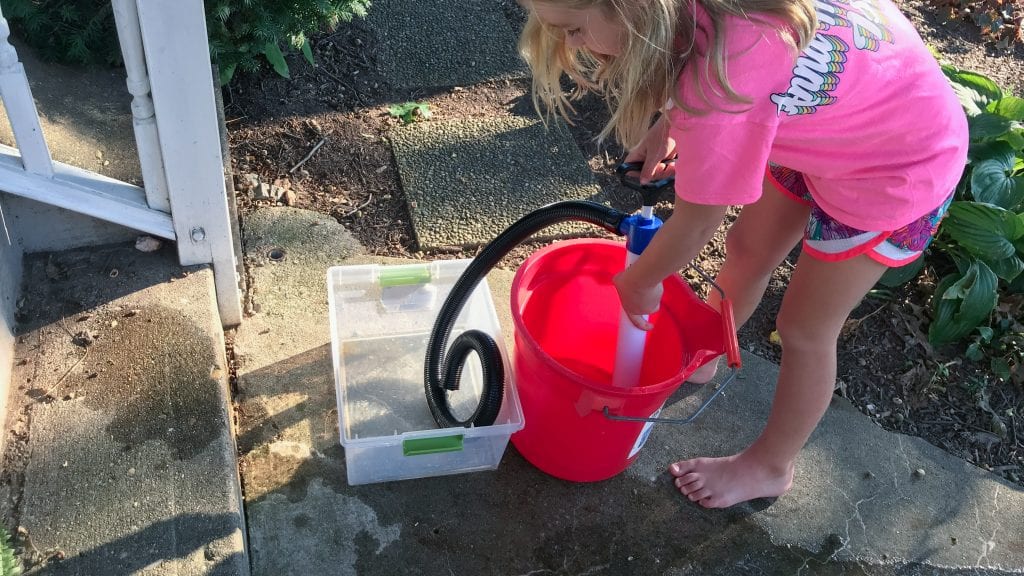
That’s where a bilge pump comes in. Just as a sump pump extracts water from buildings, bilge pumps remove water from a boat. Whether you have a kayak, fishing boat, houseboat or another type of watercraft, a bilge pump can rescue you if you ever find yourself in that situation.
Bilge pumps aren’t just for hazardous situations, though. If water begins to infiltrate your boat, you may simply find that you’re dealing with an unpleasant situation. Swamping gives you nowhere dry to set your feet while you’re enjoying your day on the water. A bilge pump will help you keep the bottom dry until you can get to land and repair the issue that’s letting water in.
The good news is, you don’t have to have a bilge pump installed to have one on hand in case you need it. There are portable versions that you can store on your boat. Some are more portable than others, though, so if you have a smaller watercraft like a kayak, you may want to choose something that’s lightweight and easy to store.
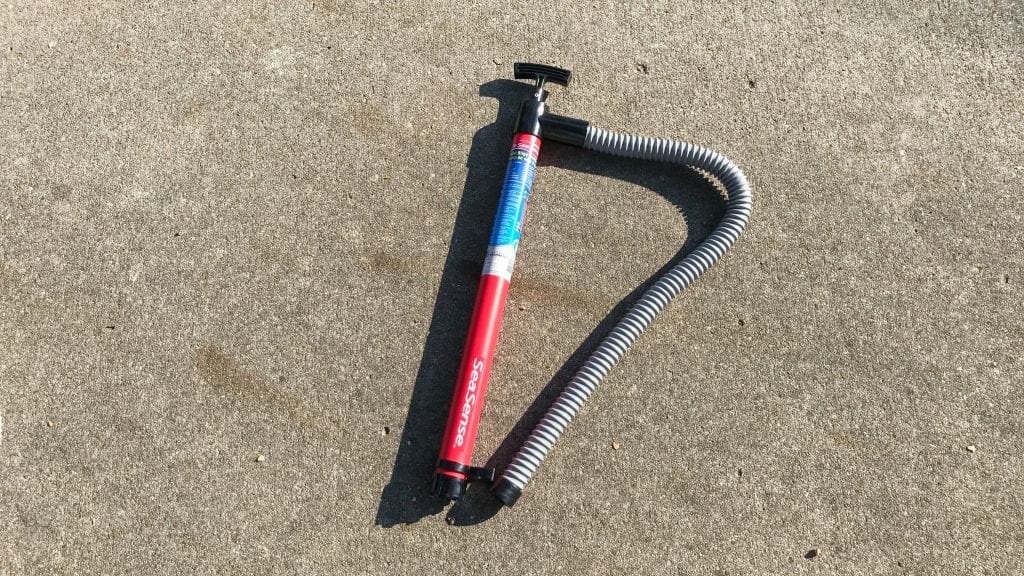
But even if you have a larger boat, a smaller build can come in handy. You’ll find that it’s easier to find a place to keep your bilge pump. Since you’ll rarely need to use it, bulk will be more of a factor than weight. However, if you do need to grab it and run, having one that you can easily lift will come in handy.
Ask any boater, though, and one thing they want more than anything is power. Having to spend hours tediously extracting and dumping water from your boat can be not only exhausting but time-consuming. That’s time you could spend enjoying your excursion. Some manual pumps have motors, while others build in steel shafts to give a little oomph to each pump.
Whether your bilge pump is built onto your boat or you have a portable one, it’s important to occasionally perform maintenance on it. Even without use, bilge pumps can begin to rust and degrade over time, especially with so much exposure to moisture. Make a date to check in at least once a year. Make bilge pump maintenance part of your procedures when preparing your boat to go back out on the water at the end of winter.
What to Look For
- Even the bilge pumps built into a boat may not be sufficient in a serious emergency. Look at the capacity of your boat. If you’ll be heading more than a few hours away from land, consider investing in one that can extract hundreds of gallons of water per minute.
- There are two major types of bilge pumps: centrifugal and diaphragm. A centrifugal pump uses kinetic energy to extract water through a rotating impeller. This process allows the pump to remain inexpensive while still being functional. However, the other type of pump, a diaphragm pump, can operate when you need to pump water uphill. Diaphragm pumps act similarly to a Wet-Vac, using a sucking motion to extract the water.
- The size of your boat will determine the capacity of the bilge pump you need. The American Bureau of Shipping recommends having at least one 24-gallon-per-minute pump if your boat is under 65 feet. If your boat exceeds that size, you need to up the capacity accordingly.
- For portable pumps, the length of the hose is an important factor. A longer pump will help you reach into deeper boats without having to get down in the trenches. But the biggest benefit of a longer hose is that you can extract more water in each go, cutting down on the manual labor required.
- Although hose length is important, also look at the diameter of the hose. Wider hoses also will help move water more quickly and with less effort.
- Leaking is a serious issue with bilge pumps. Even a small leak will reduce your pump’s efficiency, requiring more work for a longer period of time than you would have to endure otherwise. Look for features like rubber seals and extra caulking to keep leaks to a minimum.
- Bilge pumps have filters to ensure only water is removed. If the filters clog, it can become a nuisance. A pump with clog-reducing features can be a huge help.
- You’ll have to occasionally clean your pump. Check to see if it comes with removable parts to make cleanup easier.
- You may never need it, but buoyancy can come in handy. If, for some reason, your pump drifts to the water outside your boat, you won’t have to worry about it sinking to the bottom of the ocean or lake.
- Since you’ll need to store your bilge pump, consider how you’ll store it. Obviously, smaller is better in this regard, but also keep in mind that you might want to mount it. In that case, a suction cup or a way to hang it on a hook can be essential.
- Consider how your bilge pump gets power. The wiring can be damaged by exposure to water, which will be a problem if your boat takes on excessive water.
- Even if your boat has a bilge pump built in, it’s not guaranteed to work when you need it. The electricity could fail or the device itself could simply stop working. Having a portable one on hand can give you the security of knowing that you’ll a backup on hand if you need it.
You May Also Enjoy Our Other Reviews
- Robotic Vacuum
- Cordless Vacuums
- Air Mattress
- Drone
- Electric Razor
- Convertible Car Seat
- Infant Car Seat
- Dry Dog Food
- Carpet Cleaners
- Air Fryers
- Laptops
- Home Printers
- Wireless Router
- Streaming Device
- Electric Pressure Cooker
- Chromebook
- Television
- Digital Camera To Capture Special Moments On The Fly
- Smartwatch
- Upright Vacuum


